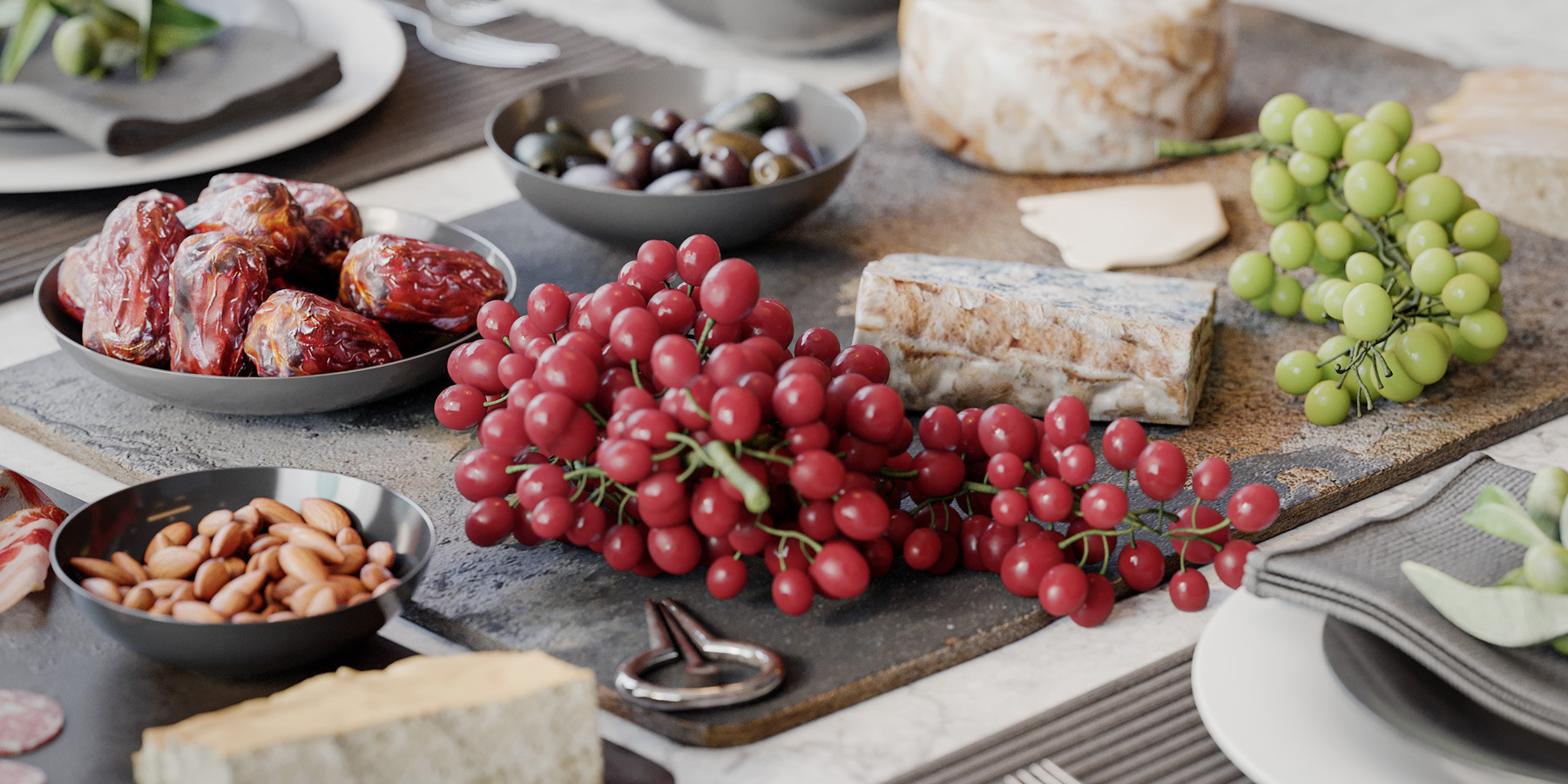

4th March 2021
Vignettes and other emotive imagery are valuable underutilized tools in interior design rendering and property marketing. They can showcase a lifestyle for prospective buyers, highlight key features and convey the character and stylisation of a development.
Vignettes are all about attention to detail, creating snapshots that visually communicate the interior designer's and developer's vision for a development and lifestyle that goes with it.
They are designed to tell the story of a space and to grab the viewers’ attention, encouraging them to lean in for a closer look. Their goal is to captivate the interest and emotions of a buyer with intentional compositions and object placement.
In this article, we are going to take a detailed look at vignettes and cover the following:
A vignette (in terms of interior rendering) is a curated scene of considerately placed objects or composition that sets the tone for the wider environment. They are the “tight snapshots'' that focus on details or a group of objects in an attempt to convey a particular feeling or message. For example, these carefully selected items set the mood for the space, offering a glimpse into the wider interior design scheme through a small selection of accessories, cushions, artwork, glassware and ceramics.
Every object, colour and texture should be purposefully chosen to support the character of the development. A fur throw by the fire could complement the warm and cosy atmosphere of a countryside cottage, but a wine-cooler in a high-spec kitchen with polished concrete worktops would be more fitting for a modern apartment in the city.
A beautiful vignette is an alluring, concise and descriptive frame that engages the target audience.
It should have a lasting impression on its audience, stimulate their imagination and evoke emotion. Buyers are simply not as attracted to empty or lifeless spaces - the attention to detail and atmosphere created is a key selling point. When attention has been paid to every single detail the buyer know that they are in safe hands.
We use vignettes in our interior renders as a powerful tool to convey emotion in our projects, this could be to accentuate a modern high-spec design or to create a cosy, homely ambience. Here is a selection of vignettes from our recent projects.
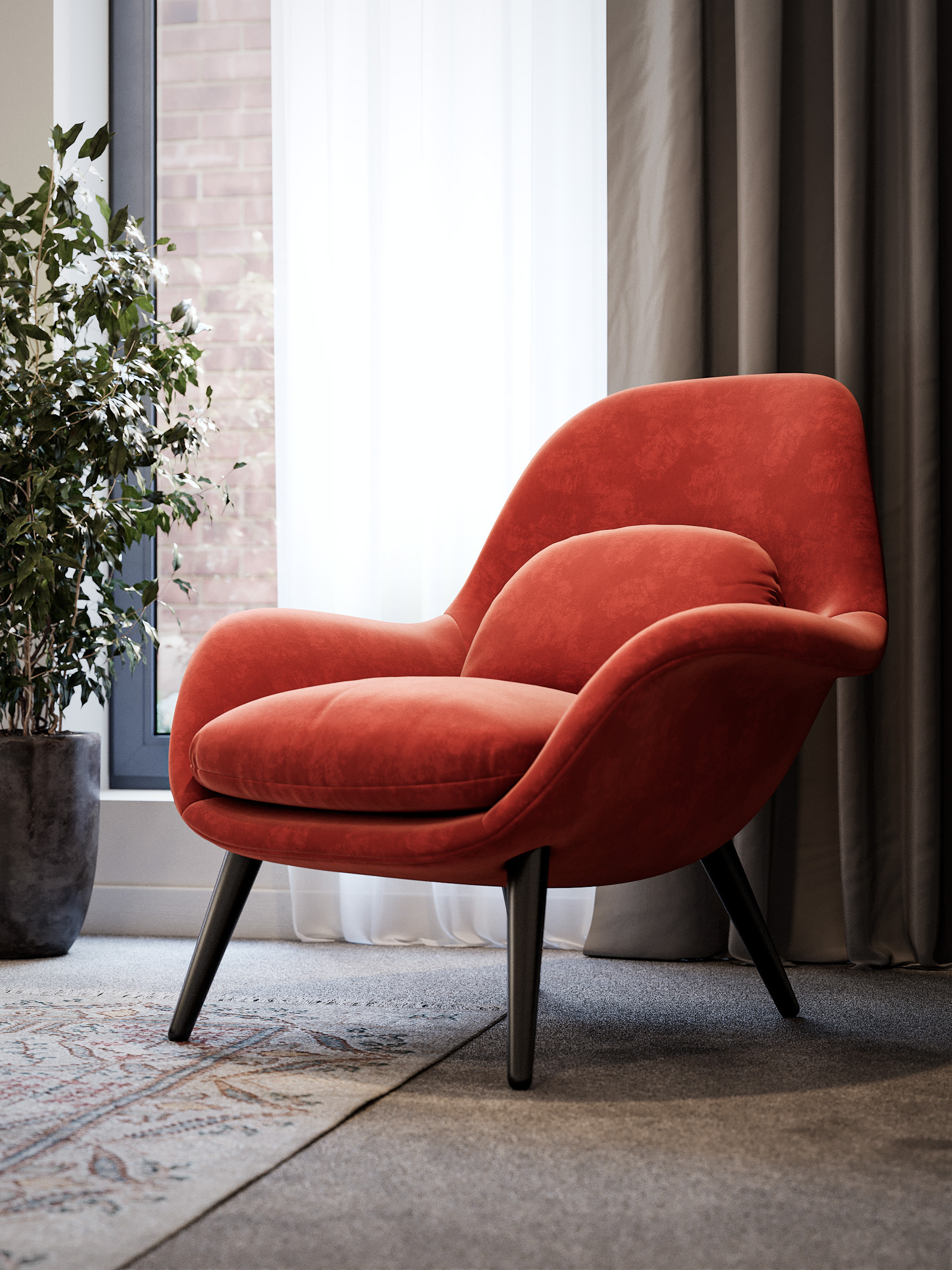
The red armchair in this scene provides warmth to the room and evokes the desire to relax and unwind. Its comforting shape and deep colour invites us to take a break from the hustle and bustle of our busy daily lives. Pairing the armchair with the potted plant helps to build a connection to the natural environment for added relaxation and zen.
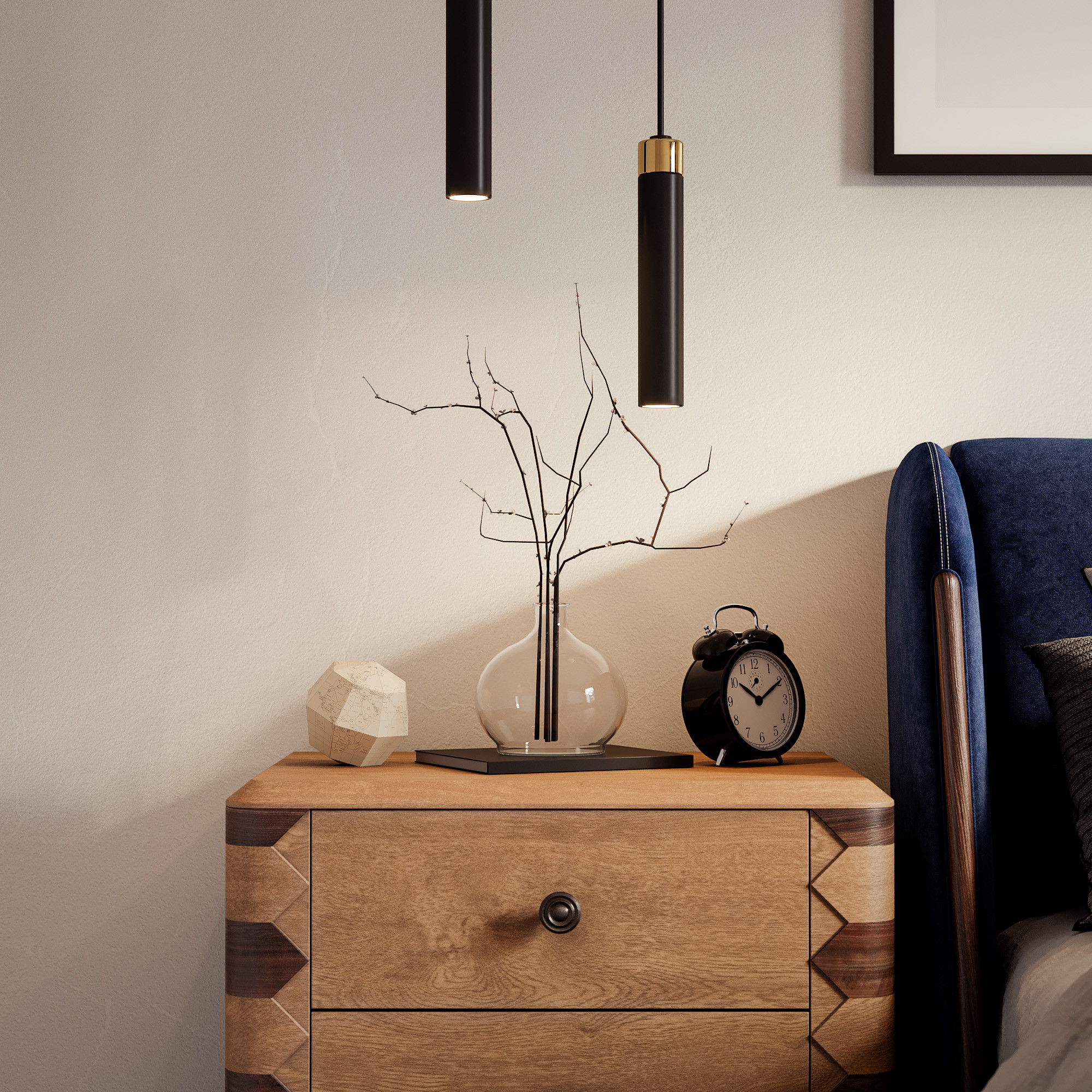
Immediately your eyes are drawn to the grains and textures of the wooden bedside table, setting the scene for a sophisticated and classic design. Your eyes are guided upwards through the glass vase, following the twigs up to the timeless black and gold hanging lights. Then across to the soft texture of the deep blue headboard of the bed.
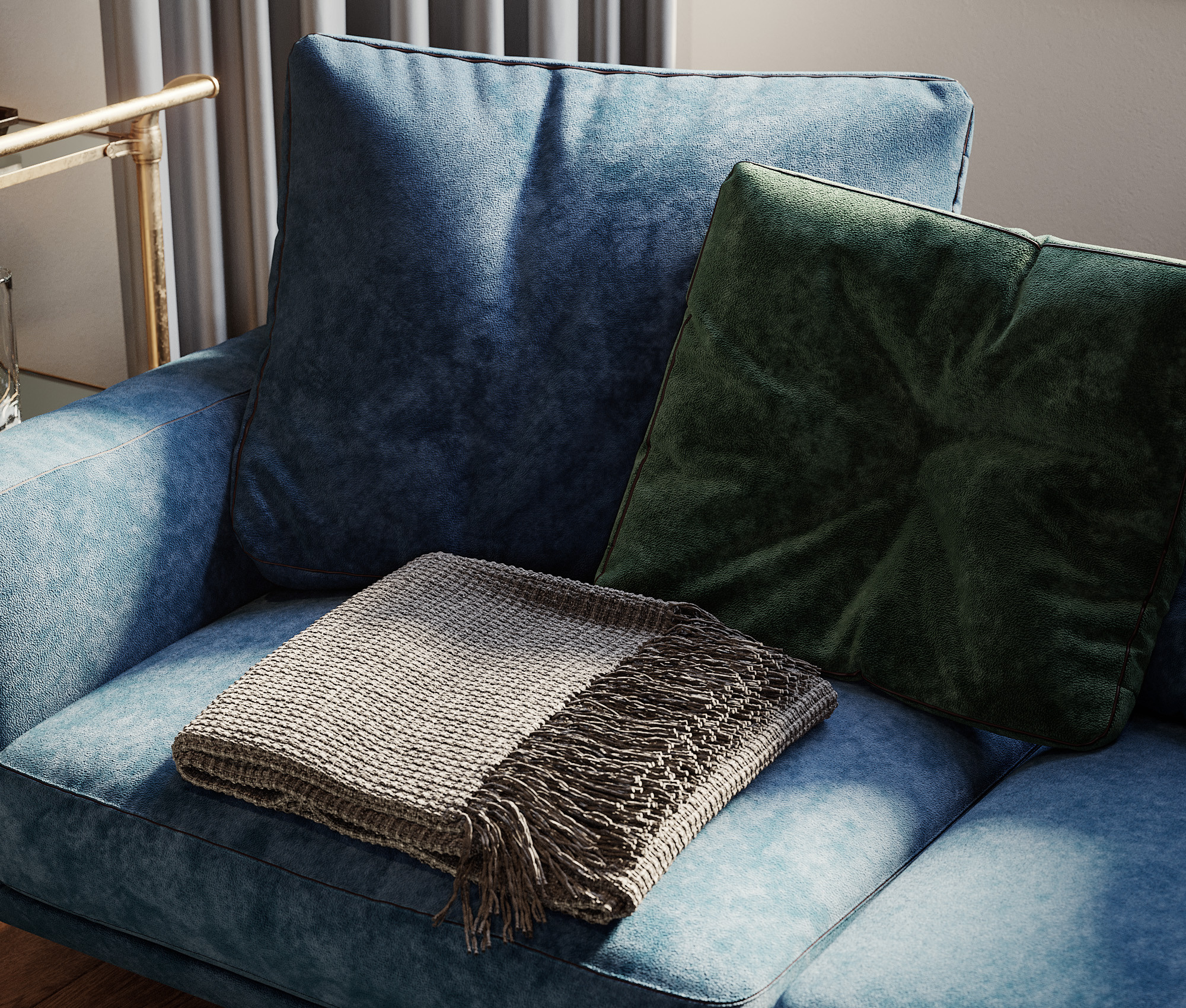
The use of shadows and light within the vignette adds depth to the texture of the sofa. At first, you’re drawn to the blue on the arms and front of the seat cushions, where your eyes indulge in the soft texture of the material. Your eyes are then guided to the pattern and texture of the throw, neatly folded waiting for you to come and relax. Finally, you notice the dark green tones of the cushion which provide an additional touch of luxury.
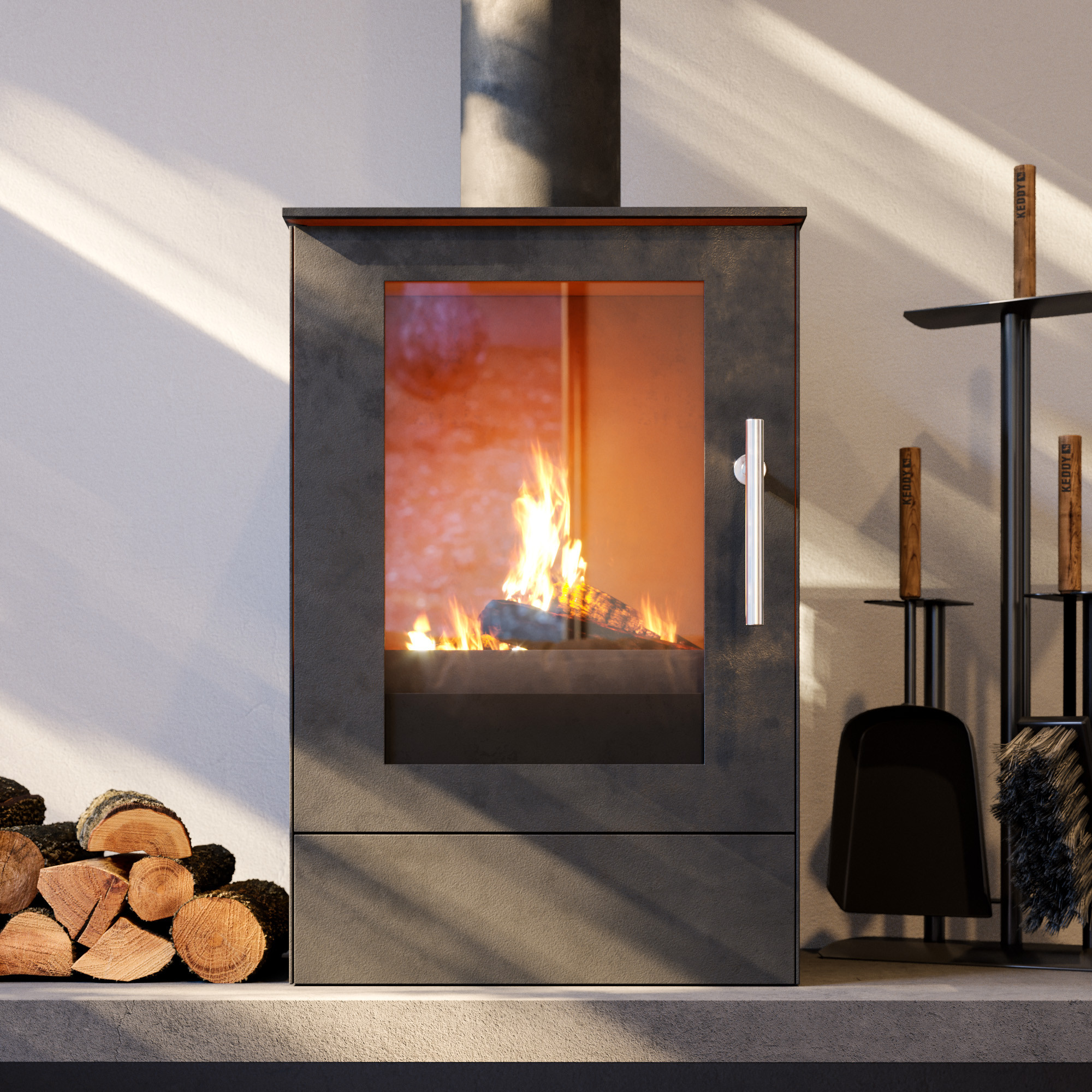
This vignette conveys a homely cottage feeling but with modern sophistication. The movement of the flickering flames is animative and welcomes the prospective buyer into the home. The composition is rustic, such as the pile of logs and tools to tend to the fire with. However, the clean lines, the concrete base and the contrasting dark and light tones create a more contemporary style.
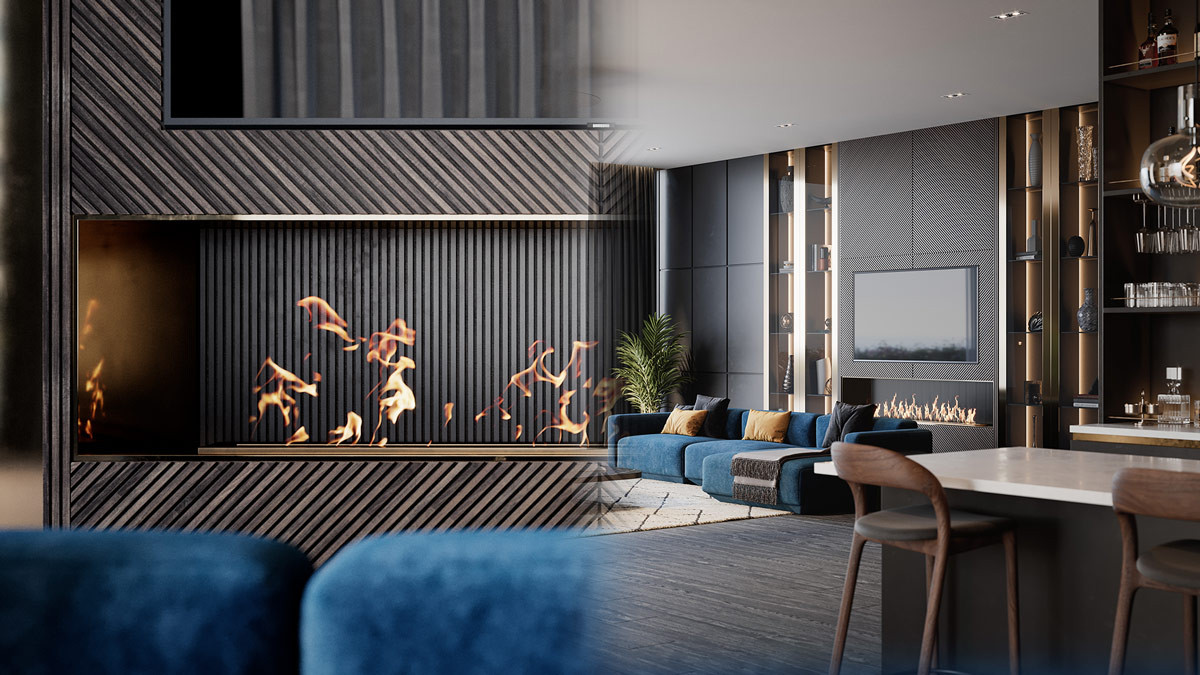
Interior rendering is a general term that includes many types of CGIs. One type of interior render is the technical CGI. These are basic in term of the visual style but can be very informative and simple to create. As a result, they are often used by kitchen or furniture manufacturers to illustrate the layout and scale of objects within a space.
On the other side, interior renders can be emotive. These CGIs tend to be more focused on creating a feeling, impressive visuals and selling a lifestyle. As a result, they are often used to market property as they reinforce the story of the development and excite potential buyers. This is done by, paying close attention to the details and creating the right mood through the intentional use of lighting, composition, colour schemes and interior design elements.
Vignettes take the idea of emotive interior renders and commit to it. They are specifically designed to be captivating snapshots without the constraint of having to show an entire space. They offer a more focused visual representation of a home and are therefore great at reinforcing the key messages and features of a development.
There is room for interpretation here, CGIs are not completely technical or emotive, but somewhere in the middle.
As you can see, both interior renders and vignettes have their purpose and benefits, because of this, vignettes and interior renders complement each other perfectly. Interior renders can be used to illustrate the layout, flow and general design intention for a space with vignettes providing additional marketing content that reinforces the design aesthetics and shows-off the details. Together they can form a wider representation of the development, perfect for any marketing campaign.
Here are our top 5 tips to help you improve the quality of your vignettes.
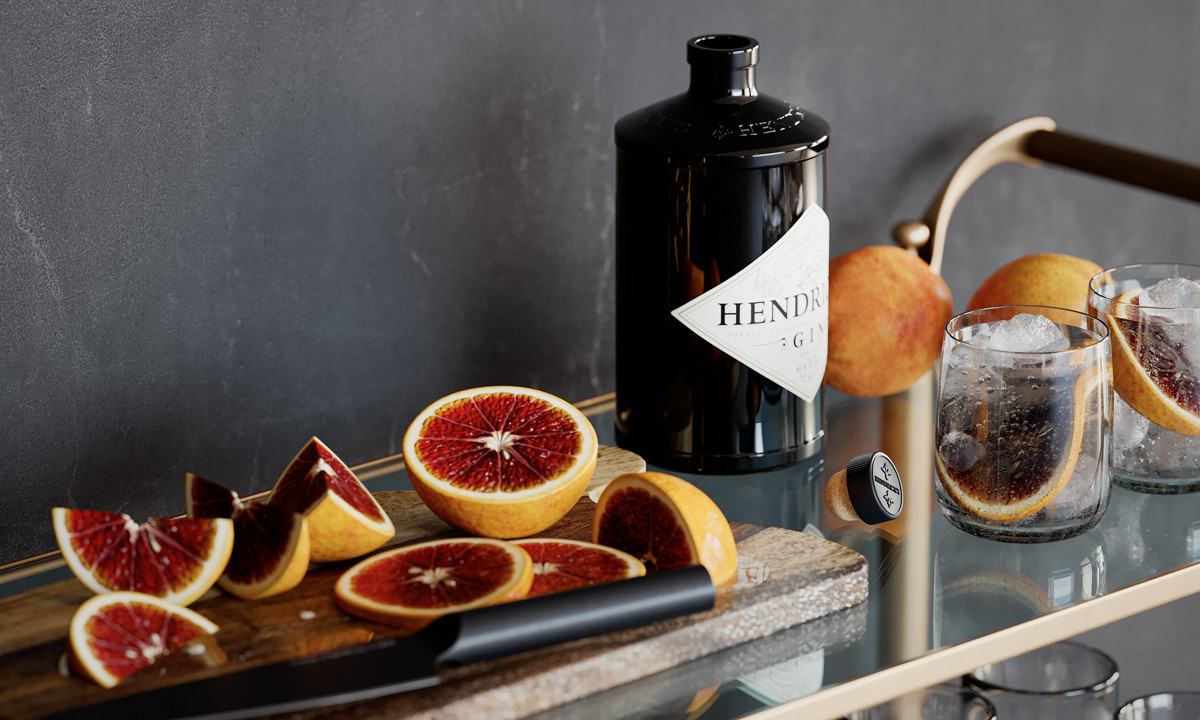
As vignettes typically only focus on one object or detail, it helps to pick something interesting. For a more effective result select an object that has a purpose or meaning behind it. It can be helpful to ask yourself a few questions:
Answering these questions helps to understand the mood and emotion that the vignette will create.
The environment is also a vital part to consider. Elaborate, grained wood cabinets can either provide the finishing touch or look chaotic and detract from the main focal point. The surroundings should frame the subject, have a positive impact on the overall visuals and be used to further enhance the mood.
It's also important to consider styles, tones, texture and personality. Elements can have different design styles but they should complement each other and “belong together”. If you find that a vignette is looking obviously “staged” try to inject some personality with photographs, unique props or quirky knick-knacks.
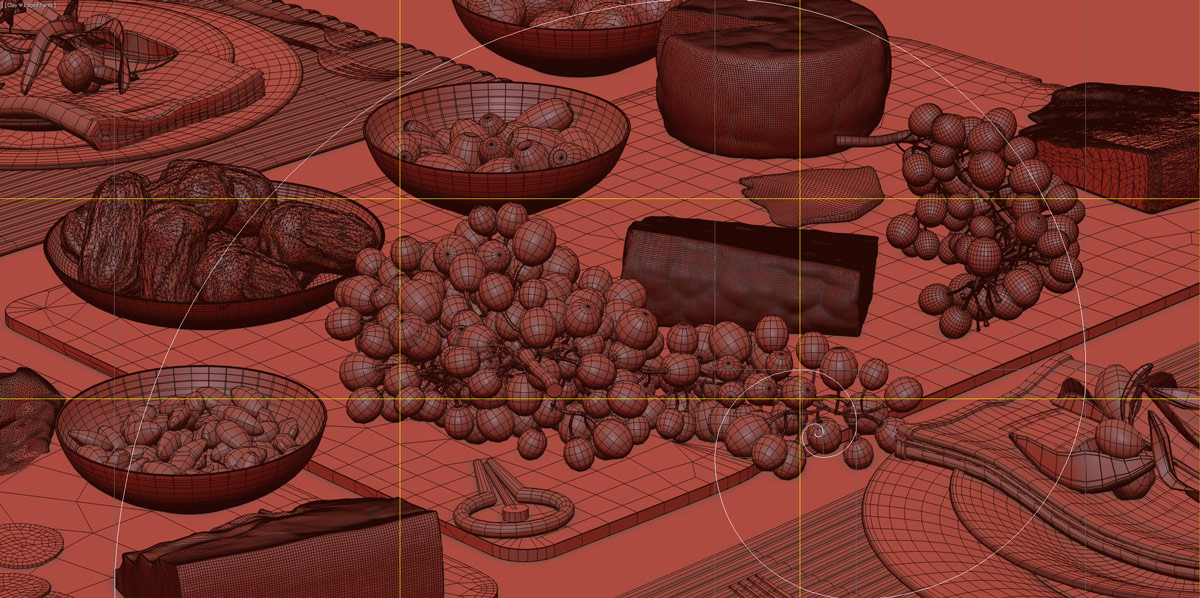
Once you’ve selected your subject, start testing out different camera angles and focal lengths (more on this in the next tip). This will help you to quickly identify the compositions that work, and the ones that don’t.
This is your chance to get creative, we have very few limitations in 3D rendering and the artistic potential of vignettes is a great time to show it off. So try placing a camera on a timber beam in the ceiling looking down on your scene, or looking through a pair of glass on the coffee table or anything else you can think of.
If you are struggling to create compositions that you are happy with, try to follow some of the basic photography composition rules, such as the rule of thirds or ensuring that your composition is balanced. But don’t let these hold you back, if your angle breaks all the composition rules but you think it better captures the story and emotion then go with it. At the end of the day, the goal is to create an engaging image that effortlessly guides your viewer’s eye. Also, don't be afraid to crop in or play with the aspect ratio often vignettes work better as square or vertical images.
We find that the imagecomphelper script comes in handy when setting up cameras, it overlays popular composition rules to your viewport.
Select a few of your favourites angles and see if you can improve them. Maybe you don’t have enough verticality in the scene, objects are spaced too close to each other or there is too much of the same texture. Can the lighting be improved? Perhaps changing the direction of the sun and adding a rim light better accentuates the texture details.
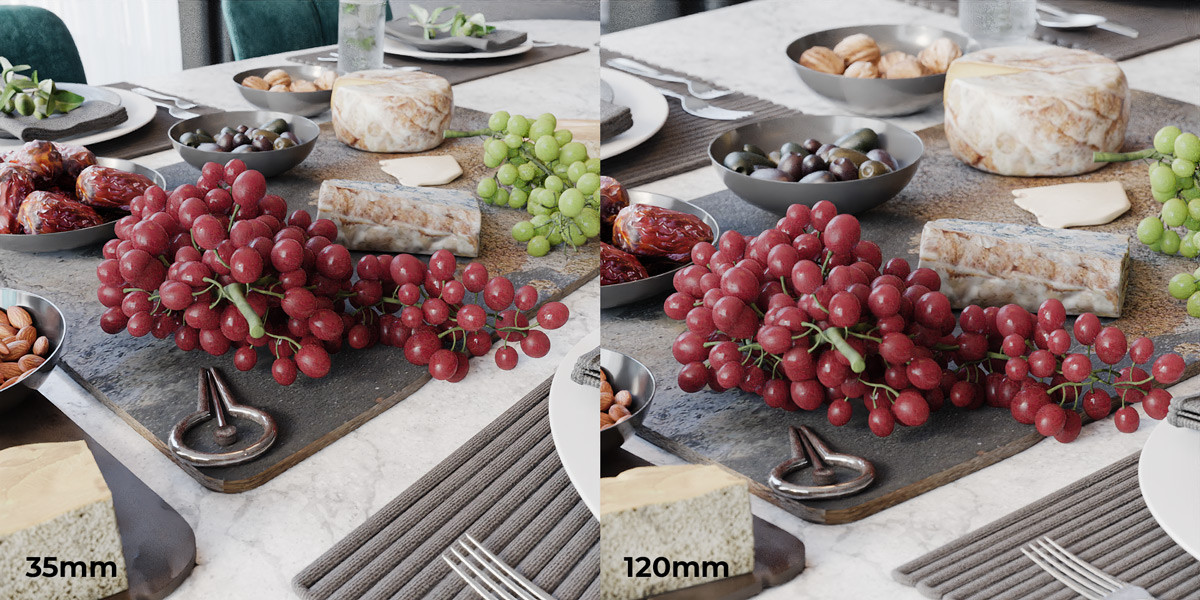
A longer camera lens/focal length lets you to punch into your subject and capture it in a way that highlights the details. It flattens the composition and creates a shallower depth of field (which is something we will talk more about in the next point) typically improving the composition and drawing more focus to the subject.
We have tried to illustrate the effect of a longer focal length in the images above but the best way to fully understand it is to give it a go yourselves. Next time you are setting up cameras for interior render try to step back and increase the focal length.
It can be easy to revert to a wider-angle lens, but remember what you are trying to achieve. The purpose of a vignette isn’t to show the whole space, it’s all about the fine details and close-up shots. Keep in mind that interior renders and photographs typically use focal lengths that range between 15-35mm, for interior vignettes we recommend using between 70-150mm.
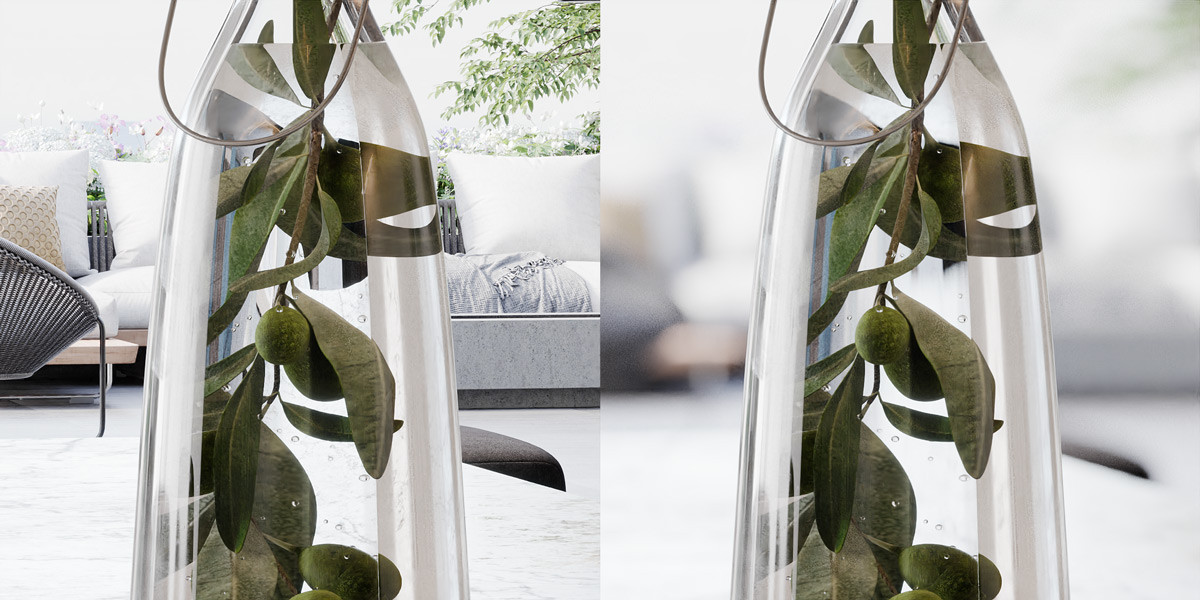
Using a shallow depth of field is a great way to highlight what is important in the image. When used effectively it makes the subject almost jump out from the background creating a strong focal point. A shallow depth of field provides a smaller range of focus, which means only objects very close to the focal distance will be sharp and in focus.
As well as the background, depth of field can be used on foreground elements to create additional interest or to assist a composition. The leaves of a plant could be introduced into the corner of a composition to help balance it out or an open door could be used to frame a subject. As these elements are out of focus, they lack detail and will not detract from the main focal point.
Nobody said that vignettes have to be still shots. Motion within a vignette adds another layer of interest and can make it even more engaging. The flickering flames from a fireplace or candles can be used to fuel the emotion of a cosy and warm space. Whereas a moving curtain can indicate a gentle breeze - beautiful for calm coastal properties in the summer.
Although you can animate the camera, we recommend keeping it stationary and focusing on the motion of objects within the scene. The reason for this is twofold:
While vignettes will never take the important role of conveying the overall design and layout of a development away from traditional interior rendering, they are a perfect way to showcase a lifestyle, highlight details and grab the attention of prospective buyers. These snapshots capture the essence of a space and intrigue the buyer by captivating their emotions. To achieve this, vignettes need careful consideration to elegantly communicate the character of a home. Colours, textures, patterns, light and shadows of the objects within a vignette are important as is their placement.
These carefully arranged scenes are powerful marketing tools that engage buyers through visual intrigue. Images are very powerful marketing tools, people don’t want to read a block of text to gauge the style of a property. Instead, they can quickly absorb the style of a space visually through interior rendering and vignettes.
To find out more information about the vignettes and interior renders that we create, check out our interior rendering services.
Let us know what you think! Would you like to see more content like this? Or have you got a question for us? Either way, we look forward to hearing your thoughts and continuing the discussion.
Alternatively, if you want to talk about career opportunities, discuss an upcoming project, or just say hi, we would love to hear from you too!